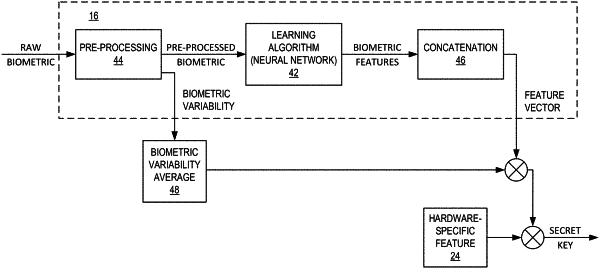| CPC G06F 21/32 (2013.01) [A61B 5/0006 (2013.01); G06N 3/08 (2013.01); H04L 9/0866 (2013.01); H04L 9/0869 (2013.01); H04L 9/3231 (2013.01); H04L 9/3278 (2013.01)] | 22 Claims |

|
1. A method for biometric authentication, the method comprising:
generating a first biometric feature vector from biometric data, the first biometric feature vector identifying a user;
generating biometric variability data based on the biometric data;
generating a hardware-specific feature vector;
concatenating the first biometric feature vector with the biometric variability data to generate a second biometric feature vector; and
generating a secret key based on the second biometric feature vector and the hardware-specific feature vector.
|